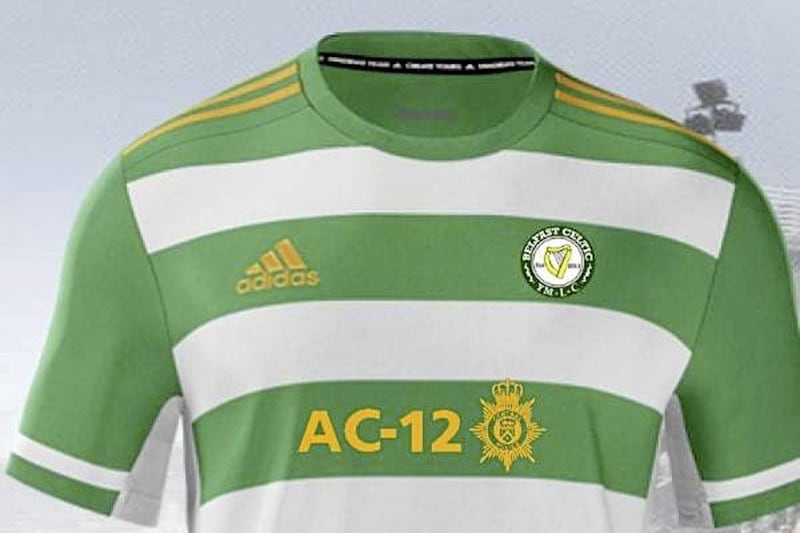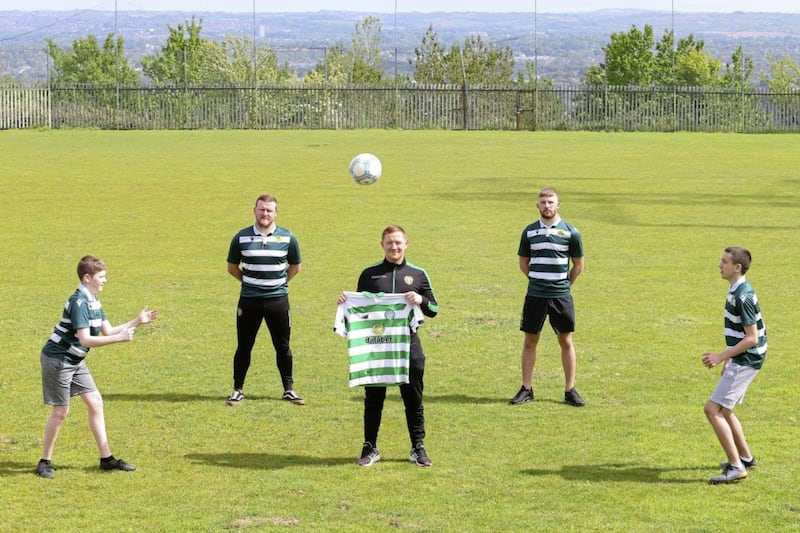AT the outbreak of the Second World War, the Irish League downsized to the Regional League with Derry City competing alongside a cluster of clubs around Belfast.
Some professional players from England were stationed here with their regiments and guested with local clubs. Future West Ham and England manager Ron Greenwood, who was stationed with the RAF in Kilrea, was on the books at Paradise.
However with defenders Harry Walker, Jackie ‘Sausage’ Vernon, Billy McMillan, Jack ‘The Hack’ Leatham and Bertie Fulton to choose from, Elisha Scott had no real need for the young Greenwood.
Perhaps Scott’s opinion of military personnel was influenced by events that had unfolded in November 1942.
The Celtic manager was left shaken and bruised after being assaulted by a group of soldiers close to his home at Roden Street bridge. Given Scott’s reputation for being tight-fisted, the most painful part of the experience may have been the prospect of paying out 17 guineas to get his dentures repaired!
However, it would be the occurrence of a more serious assault six years later that would have a more lasting impact not only on Scott, but the entire Celtic diaspora as well.
Throughout the 1940s, the City Cup, Gold Cup and Irish Cup became almost permanent fixtures in the boardroom at Paradise, while along the Donegall Road at ‘the Shrine’, Linfield supporters were becoming increasingly unhappy with the lack of a serious challenge to Celtic’s position.
And that frustration was not helped when a teenage footballer from Lurgan, who had been released by Windsor Park, signed on for Celtic.
Having witnessed Jimmy Jones score six goals for Shankill Young Men, Elisha Scott persuaded him to try his luck at Paradise. From January 1947 through to December 1948, Jones was constantly in the limelight, finishing off the chances set up by Jackie Denver, Charlie Tully, Johnny Campbell and Paddy Bonnar.
In the lead-up to the ‘Boxing Day’ derby match there was growing tension in Belfast.
At the end of the 1-1 draw with the Blues on Monday, December 27, a section of the Linfield support invaded the pitch and attacked the players. Jones, the last Celtic player trying to escape the field, was stamped on by the mob and his right leg was shattered.
Only the skills of orthopaedic surgeon Jimmy Withers saved it from being amputated.
The career of Jones, who had scored 30 goals in 20 matches and had attracted a bid of £16,000 from Newcastle United, seemed to be over.
H owever, as far as the directors were concerned, it was over for Celtic. While some Linfield supporters were showing more remorse than the authorities for the attack on Jones at Windsor Park, the Celtic board, angered by the Irish FA’s lack of proper investigation, determined to take its own action.
A strategy that had worked before could work again. Celtic would resign from the Irish Football League.
Quietly, the leading players were sold off to clubs in England, only to be loaned back in time for a pre-arranged 10-match tour in North America.
Robin Lawler and Johnny Campbell went to Fulham. Paddy Bonnar was signed by Barnsley. Tommy ‘Bud’ Aherne settled in Luton. Harry Walker’s proposed moves to Arsenal or Fulham were never finalised.
Celtic’s last league match, a 4-3 win over Ciftonville at Solitude, was played on Thursday, April 21, 1949. The official party set sail for New York from Cork six days later.
News of Celtic’s withdrawal was common knowledge even before the letter of resignation arrived at the Irish League’s offices.
Since Jimmy Jones was unable to travel to America, Celtic invited Glenavon forward Alex Moore to take his place along with some other guest players. Lurgan native Jones did recover and went on to play for hometown club Glenavon.
But it was Moore who would join Johnny Campbell in the history books when the pair scored the goals that defeated British champions Scotland, 2-0 at New York’s Triborough Stadium on May 29, 1949.
On arrival back at Great Victoria Street railway station, the returning Belfast Celtic squad was mobbed by thousands of supporters and reporters wanting to ask questions. Would there be a repeat of 1924 when the Irish FA had implored Celtic to come back?
The brinkmanship continued. Crusaders took Celtic’s place at the top table. The apology that the Celtic board was expecting never came. The ‘Grand Old Team’ was to take its rightful place in sporting folklore.
However, that is not quite the end of the tale.
Rumours of a return were regular currency for decades because the Belfast Celtic Football and Athletics Club continued to file annual returns.
Since its formation 12 years ago, the Belfast Celtic Society has been gathering memorabilia and photographs and hosting cross-community workshops at its museum in the Park Centre.
Last October, the inaugural Belfast Celtic Cup, supported by the Park Centre, was staged at nearby Willowbank Youth Club. Linfield’s under-12 team defeated Cliftonville’s team in a penalty shoot-out to win the trophy.
At the prizegiving in the museum, there was a sense of the old days when fans packed together in Paradise.
To the older generation, the museum is a memory bank of the ‘Grand Old Team’ and a bygone time when Celtic Park was alive to the singing of 40,000 supporters.
To those born after the club’s departure, it is a way of letting them know of an era when footballing heroes like Tully, McAlinden, Fulton, Simpson or McIlroy were ordinary men who lived next door...








